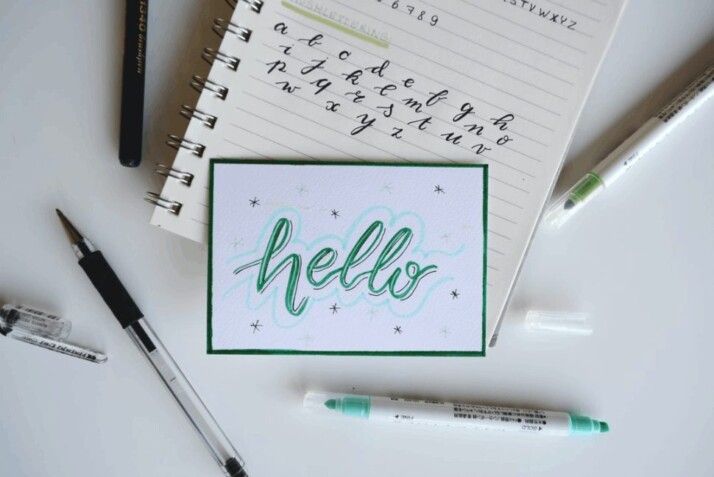Salutation of a formal letter can exist in various forms.
What Is a Salutation?
A salutation is the greeting used to start a professional letter, such as a business letter, legal letter, or email. It is used to formally greet or close the letter.
It’s the first sentence your reader sees when they open your letter, and it tells them who you’re writing. It is used to extend respect and courtesy to the recipient and the channel of communication.
Salutations should not be mistaken with closing statements, which should be placed at the end of the letter.
Why Is Salutation Important in a Formal Letter?
Salutations are significant because they set the tone of your correspondence and establish the attitude with which your reader should respond. It makes the receiver understand the seriousness of the business and increases the level of responsibility from the sender.
A formal greeting in a letter lets the reader know that the content is serious and requires an official response. However, a casual response may be given to a serious letter with an informal salutation.
Salutations indicate your understanding of business rules and etiquette in business letters and emails.

The Salutation of a Formal Letter in Different Situations
When writing a formal letter, it’s always a good idea to add a salutation for a sense of professionalism. This can be a little tricky because there are many ways to address a letter.
You can send the letter to a business, organization, colleague, friend, or person you want to establish a formal relationship.
Depending on the situation, you may be limited to certain options. Below are some situations where you require a formal salutation.
Formal salutations
Mr., Ms., and Mrs. are the most formal salutations, followed by the person’s last name. You can use that salutation if you’re unsure what else to say.
It is appropriate in all situations and is widely accepted in different scenarios. It is safer to use Ms. for women unless you are sure about what she prefers. Other common formal salutations include:
- Dear Sir
- Hello
- Good Morning
Business letters salutations
The salutation Dear can be used to begin a business letter, followed by the recipient’s surname or first name and a colon. If you have a good relationship with the recipient, use their first name.
If you don’t know the individual well or if this is the first contact, use the last name. The most formal salutation starts with Dear, followed by the title and last name.
Business letter salutations for unknown recipients
You can use “To whom it may concern” or the job title if you don’t know the recipient’s name or gender. Use the same salutation when writing to an institution as well.
You can use Sir or Madam followed by a comma if you know the gender but not the name. Write the full name if you just know the name and not the gender.
Social business letter salutations
Social business letters are addressed toward social content like wedding congratulations, birthday celebrations, letters of condolence, and such.
Use Dear, the recipient’s name with or without a title, and a comma in a social business letter. For example, Dear [first name] or Dear Dr [first name].
Emails Salutations
According to email etiquette, you should use a salutation for your initial message and skip the greeting for subsequent messages. Business emails can use the same greetings used in business letters.
However, you can use an informal salutation with a first name followed by a comma instead of a colon for less professional emails. If you start your email with just the recipient’s name, make sure to end it on a good note.
Cover letter salutations
When drafting a cover letter, use Dear, followed by their name, and a comma to address the hiring manager. It should be listed on the job posting.
But if it isn’t listed, you can search it up on the corporate website or ask for the name by calling the company. If you don’t know the name of your contact person, the following are some generic salutation examples to choose from.
- Dear HR Team,
- To The Marketing Team,
- Dear Hiring Manager,
- Dear Human Resources Manager.
To Wrap Up
The salutation of a formal letter is essential to convey the tone and relationship between you and the recipient.
As with any formal letter or email, a proper salutation must be direct and polite, yet informative and personal. There are different types of business letters and emails that serve other purposes.
Therefore, the salutation should match these purposes as well. While there are many standard salutations, you should consider your style and infuse salutations with your personality.
Explore All Formal Letter Articles
Writing a Formal Letter for Leave Application
Looking to write a formal letter for leave application? That’s not surprising. What is a Leave Application? Allowing for a…
When to Use a Formal Warning Letter
Are you wondering when to write a formal warning letter? What is a Formal Warning Letter? A warning letter is…
Writing a Subject Line in Formal Letters
Writing a subject in a formal letter is not as complex as you imagined. What is the Subject Line in…
Writing a Cover Letter for a Report
Are you looking to write a cover letter for formal report? You’re in luck — this article explores the detail.…
A Guide to Salutation of a Formal Letter
Salutation of a formal letter can exist in various forms. What Is a Salutation? A salutation is the greeting used…
Learn to Cite Formal Letter Enclosure
For people who send business letters on a regular basis, knowing how to cite a formal letter enclosure is essential.…
